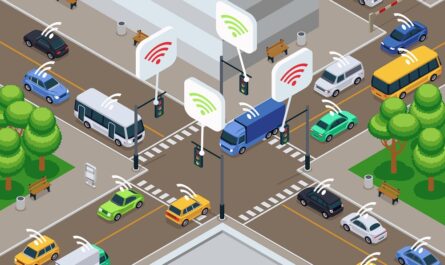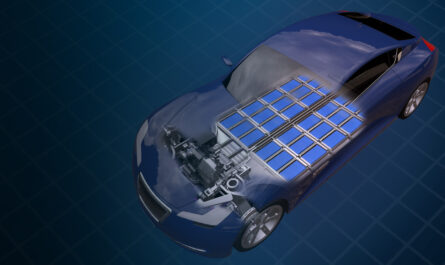Introduction to Smart Mobility
Smart mobility refers to integrated and connected transportation systems that leverage new technologies to improve efficiencies and sustainability for individuals and communities. As urban populations continue to grow rapidly, smart mobility solutions will play a key role in addressing issues surrounding traffic congestion, transportation access, and environmental impact.
What is Driving the Growth of Smart Mobility?
Several macro trends are fueling increased investment and adoption of smart mobility technologies and services. Rapid urbanization, environmental concerns, and the proliferation of connected devices have created demand for new transportation paradigms. Between 2010-2050, the world population is projected to increase by 2.4 billion with nearly 70% living in urban areas. Traditional transportation infrastructure alone cannot support this level of growth in a sustainable way. At the same time, the rapid rise of platforms and smart devices has created opportunities for digitally-enabled mobility solutions that were not previously possible. Governments and businesses are eager to leverage new technologies to future-proof transportation systems against growing populations and environmental challenges.
Connected and Autonomous Vehicles
Perhaps the most transformative element of the Smart Mobility ecosystem is connected and autonomous vehicles (CAVs). CAVs utilize sophisticated sensors, networking capabilities, and artificial intelligence to operate with minimal or no human input. Leading automakers like Tesla, GM, Volkswagen, and Ford are heavily investing in CAV research and development with the goal of mass producing self-driving cars over the next decade. The widespread adoption of CAVs could drastically reduce traffic accidents, alleviate roadway congestion through optimized routing, and provide mobility access for senior citizens and those with disabilities. However, significant technological hurdles around object detection, scenario prediction, and cybersecurity must still be overcome before fully autonomous vehicles are road-ready and legal on all public roads. In the meantime, connectivity features are being rolled out that allow vehicles to communicate with infrastructure and each other to coordinate traffic flows.
Mobility as a Service and Shared Transport
Besides privately-owned autonomous vehicles, smart mobility encompasses new business models centered around mobility as a service (MaaS) and shared transport solutions. MaaS uses digital platforms and payment integration to offer consumers subscription-based or fee-for-service access to a range of transport options including public transit, ride-hailing, bike-sharing, car-sharing, and scooter rentals. This “transit agnostic” approach aims to provide one-stop transit solutions without car ownership. Popular MaaS platforms like Moovit, Citymapper, and Uber/Lyft’s ridesharing services allow users to compare and book multi-modal trips between public transport and private vehicles in a seamless way. Shared mobility like bikesharing and car2go have also boomed in recent years, reducing the need for personal vehicle ownership and complementing public transport. Such flexible on-demand solutions are enabling more efficient “first-last mile” connections and shorter single-occupancy vehicle rides, decreasing urban sprawl and emissions footprints.
Role of Connected Infrastructure and IoT
A fully optimized smart mobility ecosystem requires seamless coordination between vehicles and intelligent infrastructure like roadways, traffic signals, and parking sensors. Connected infrastructure utilizes embedded sensors, pervasive wireless connectivity, and analytics platforms to monitor street conditions, traffic flows, and parking availability in real-time. For example, smart traffic lights can dynamically adjust signal timings based on detected vehicle volumes, improving flows at intersections. Roadway sensors also support advanced driver assistance features through high-definition maps. The integration of artificial intelligence is allowing infrastructure to become more predictive and proactive. Leveraging billions of data points from vehicles and IoT endpoints, infrastructure can anticipate incident hotspots, proactively route emergency vehicles, and optimize evacuation routes in crises. The digitalization of road networks is a foundational enabler for highly coordinated CAV platoons and traffic separation based on vehicle type, priority, or emissions profile in the future of mobility.
Data and Standards: Fueling Innovation with Open Platforms
For the smart mobility ecosystem to reach its full potential, open data sharing and interoperability standards are paramount. Significant progress has already been made in establishing consistent connectivity and communication protocols like Dedicated Short Range Communications (DSRC) for vehicle-to-everything (V2X) capabilities. Standardizing APIs, reference architectures, and data formats across transit agencies, cities, and mobility providers has also helped accelerate the integration of real-time transit and traffic APIs into consumer apps and journey planners. Looking ahead, as enormous volumes of mobility data are generated each second by vehicles, mobile devices, and roadside infrastructure worldwide, there is an opportunity to develop enriched open data sets. By aggregating anonymized datasets on travel patterns, road disruptions, maintenance needs, and rider preferences, researchers and entrepreneurs can conceive of new applications and services to incrementally improve mobility for all. Open innovation fueled by transparent data will foster collaborative solutions across public and private entities managing our roadways.
Smart mobility marks the digital transformation of the transportation sector through integrated networks of innovative solutions. From connected infrastructure to shared autonomous vehicles to mobility platforms, emerging technologies are enabling more efficient, sustainable, and inclusive access to transit. While challenges around cost, regulation, security, and user adoption remain, the macro trends of urbanization and digitalization ensure continued momentum and investment. As societies adapt to new mobility paradigms, the benefits of optimized vehicle routing, traffic decongestion, emissions reductions and multimodal access could be transformative for communities worldwide. Looking ahead, as standards mature and innovation thrives on open data platforms, smart mobility has the potential to revolutionize.
*Note:
1. Source: Coherent Market Insights, Public sources, Desk research
2. We have leveraged AI tools to mine information and compile it.



